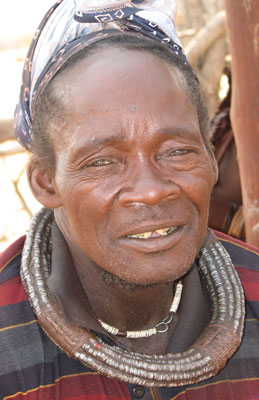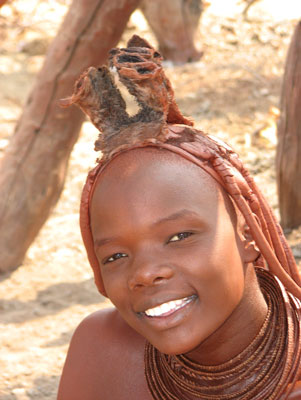Namibia’s nomadic Himba
The 12-day Namibia safari “Hidden Tribes of Kaokoland” that we took Sept. 27-Oct. 7, 2008, was inexpensive and perfectly put together. We traveled with www.explore.co.uk, booked through Adventure Center (1311 63rd St., Ste. 200, Emeryville, CA 94608; 800/487-1600).
The tour cost only $2,000 per person, and the required travel insurance cost $396 each. Through Adventure Center, my wife, Kathryn, and I paid $1,935 apiece for flights on South African Airways from Washington, DC, to Johannesburg, South Africa, with return from Windhoek, Namibia. We got malaria pills and the necessary shots before leaving.
The highlight of the tour was the visit to Kaokoland, in Namibia, the heartland of the Himba, a nomadic people who remained almost unknown until the 1980s. The Himba live much as their ancestors have for centuries in this semiarid, mountainous land, one of the last untouched areas of Southern Africa.
Our group of 12 headed into the Opuwo Region, the gateway to the remote lands of these independent people. Their kraal, or camp, spread before us, outlined by pointed sticks of the popane tree. Beyond, in the dry air, rose distant, violet mountains.
After our local guide asked permission from the chief for us to enter the kraal, we walked over dried cow dung to where he was sitting on a stick chair and carving a headrest. He welcomed us and asked, “What countries are you from?”
We said we were from Denmark, Great Britain, Canada and the United States.
“Why do you come here?”
“Because we want to learn about the people of Namibia. Some of the things here are better than where we come from.”
The chief smiled after he heard the translation, and we lined up to shake hands.
In the village were the chief and about 24 people. Women from neighboring villages also had come over to sell bracelets, bags, belts and jewelry while they watched their children.
About 6,000 Himba live in Kaokoland, but villages remain small because herds need wide grazing areas to ensure their survival in the harsh desert region. Normally, the Himba allow their cattle to eat only half the length of the grass.
Cattle constitute the center of Himba life. The Himba’s language possesses more than 300 words to describe a cow, heifer or ox, in relation to the color of its skin, the glossiness of its hair, the form of its horns, etc.
Appearance is important to the Himba; hair and jewelry hold special meaning. The only clothing each wore was a multilayered short skirt or apron of goatskin or sheepskin. They went barefoot but adorned themselves; the main item was a cone-shaped shell worn around the neck. Copper bangles decorated wrists, ankles and necks to signify marital status.
The women, tall, striking and attractive, spend hours preparing themselves, smearing their bodies with a mix of rancid butterfat, red ochre and fragrant herbs to heighten the reddish glow of their skin. This mixture also protects them from the searing sun and desert insects.
The guide led us to a wood-frame hut. Mixed with clay, cow dung is used to keep the huts warm in winter and cool in summer. Many containers hung from the ceiling.
The men and boys were outside the village, some walking and some on horseback, herding the cattle under dry trees and scrub and taking them to water holes. Some carried guns to protect themselves and their herd from lions and leopards.
Cattle can be bartered for cereals. We brought a 50-pound bag of corn meal and a couple bags of tobacco plus bread and snuff as gifts for the tribe.
Later, the chief waved me over and asked, “How many children do you have?”
“Five,” I answered.
He smiled thinly and shook his head in dismay.
I asked, “How many do you have?”
“Lots.” He laughed loudly.
The women formed a circle with their items for sale in front of them. We took photos and bargained. They held up necklaces, bracelets, earrings and small carvings but made no protest if we didn’t buy from them.
The women did not pose but played with their children or chatted. Everyone wanted to see their photo after it was taken. Young children led babies by the hand. Then the young gathered to clap and dance in a circle. Braids bounced, arms flailed, hands clapped and feet stomped as youths entered the circle and danced.
No one spoke for a long time in our Land Rover as we drove away from the kraal across an endless dirt track. We were lost in our thoughts about this brief glimpse into another world, another time.
HARVEY HAGMAN
Fort Myers, FL


